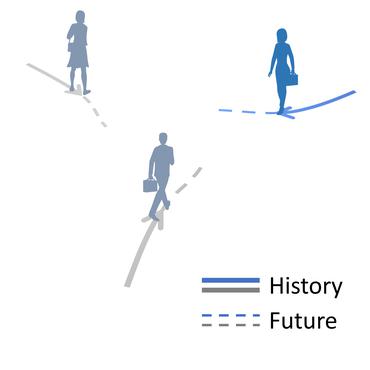Social GAN: Socially Acceptable Trajectories with Generative Adversarial Networks
Understanding human motion behavior is critical for autonomous moving platforms (like self-driving cars and social robots) if they are to navigate human-centric environments. This is challenging because human motion is inherently multimodal: given a history of human motion paths, there are many socially plausible ways that people could move in the future. We tackle this problem by combining tools from sequence prediction and generative adversarial networks: a recurrent sequence-to-sequence model observes motion histories and predicts future behavior, using a novel pooling mechanism to aggregate information across people. We predict socially plausible futures by training adversarially against a recurrent discriminator, and encourage diverse predictions with a novel variety loss. Through experiments on several datasets we demonstrate that our approach outperforms prior work in terms of accuracy, variety, collision avoidance, and computational complexity.
PDF Abstract CVPR 2018 PDF CVPR 2018 Abstract







 ETH
ETH
